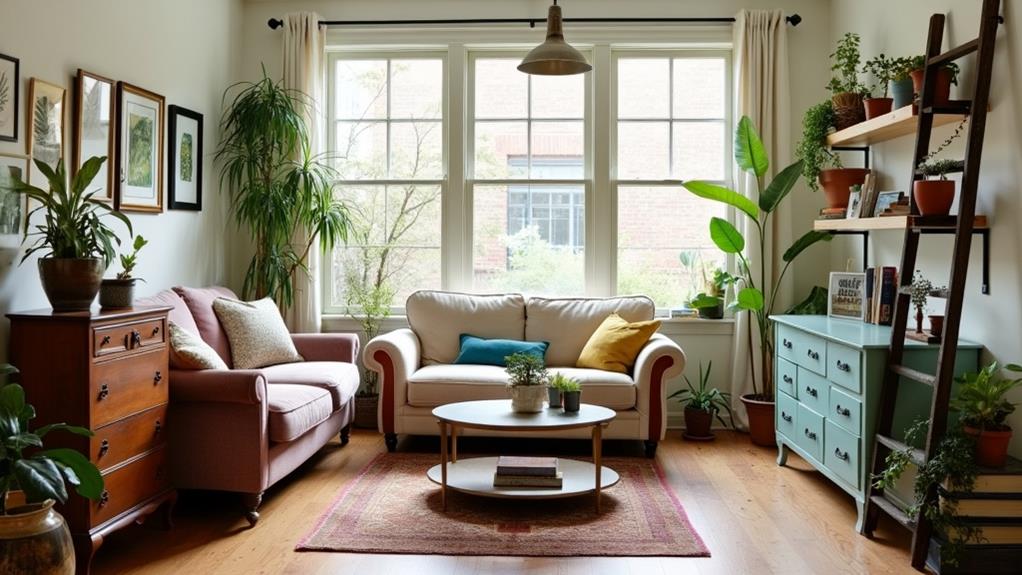Redesigning your interior on a budget is entirely possible. Start by understanding your space and setting clear design goals. Cost-effective methods like using paint as a transformative tool, thrifting, and repurposing old furniture can revitalize your space without breaking the bank. Also, optimizing space, adding personal touches, and developing a cohesive color scheme create a pleasant ambiance. It's essential to prioritize needs, engage in DIY projects, and recycle or repurpose items for maximum savings. Don't forget to take into account lighting for enhanced mood and functionality. Dive deeper into these clever secrets and design your dream space while staying budget-friendly.
Defining Your Space and Design Goals
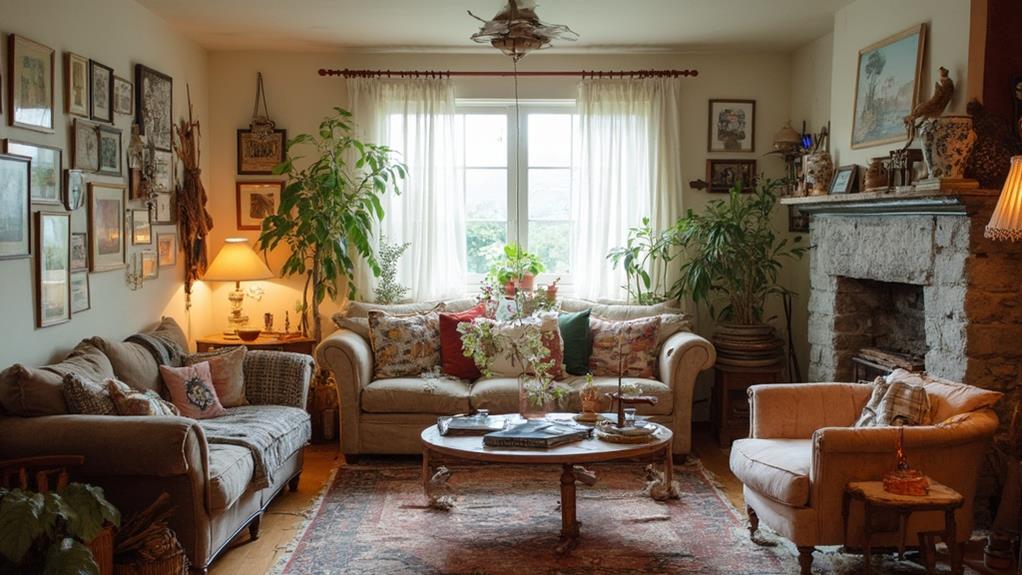
Often, the first step towards a budget-friendly interior redesign involves defining your space and setting clear design goals.
You've got to have a solid understanding of your available space and how you'd like to utilize it. Incorporating mismatched chairs in your design can add a contemporary aesthetic without breaking the bank.
Start by taking a close look at your room. Is it a small, cozy nook, or a large, open area? Each room size presents unique opportunities. For a small room, you might aim for a design that maximizes space. For a larger area, you can play with different zones for varied activities.
Next, think about the room's function. Is it a living room, where you'll host guests, or is it a personal bedroom meant for relaxation? The room's purpose will greatly influence your design choices.
Once you've defined your space, set clear design goals. These goals should align with your budget and personal taste.
You might dream of a luxurious marble countertop, but if it's out of your price range, you'll need to explore more affordable alternatives. Remember, your design goals should be both beautiful and budget-friendly.
Stick with this approach, and you'll be well on your way to a successful redesign.
Cost-Effective Redesign With Paint
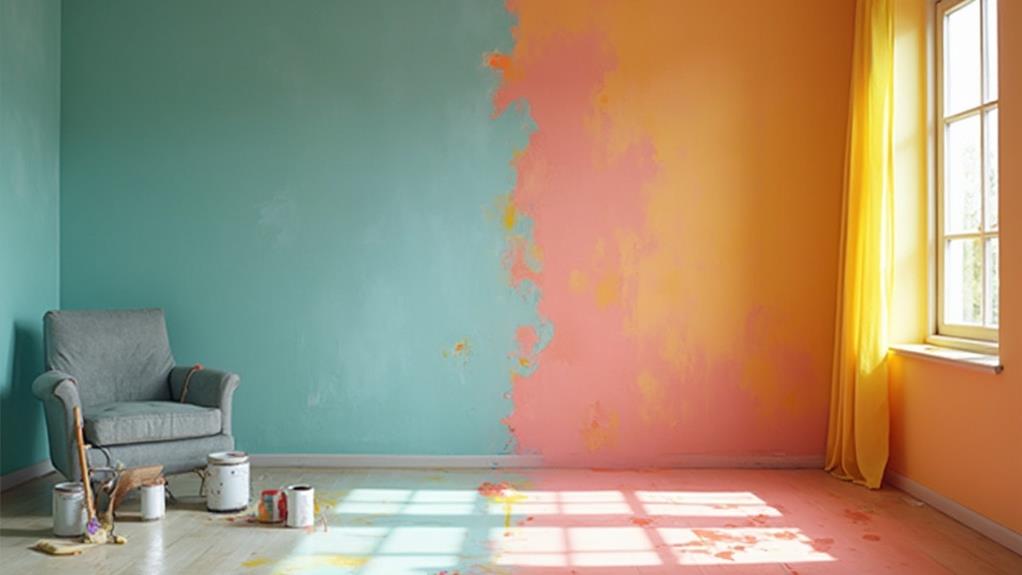
Dipping your brush into a fresh can of paint, you'll soon realize the transformative power of this cost-effective redesign tool. It's not just about covering walls with a new color. It's about creating an atmosphere, setting a mood, and expressing your personal style.
With a little creativity, you can completely revamp your space without breaking the bank.
Consider the power of accent walls. By focusing on just one wall, you're not only saving on paint, but you're also adding a bold statement to any room.
For a more subtle approach, try color blocking or stencils. They add depth and interest without the need for expensive artwork or fancy wallpaper.
Don't forget about your furniture either. A fresh coat of paint can breathe new life into that old dresser or bookshelf.
It's a cost-effective way to update worn-out pieces and make them feel like new again.
Thrifting for Interior Design Makeover
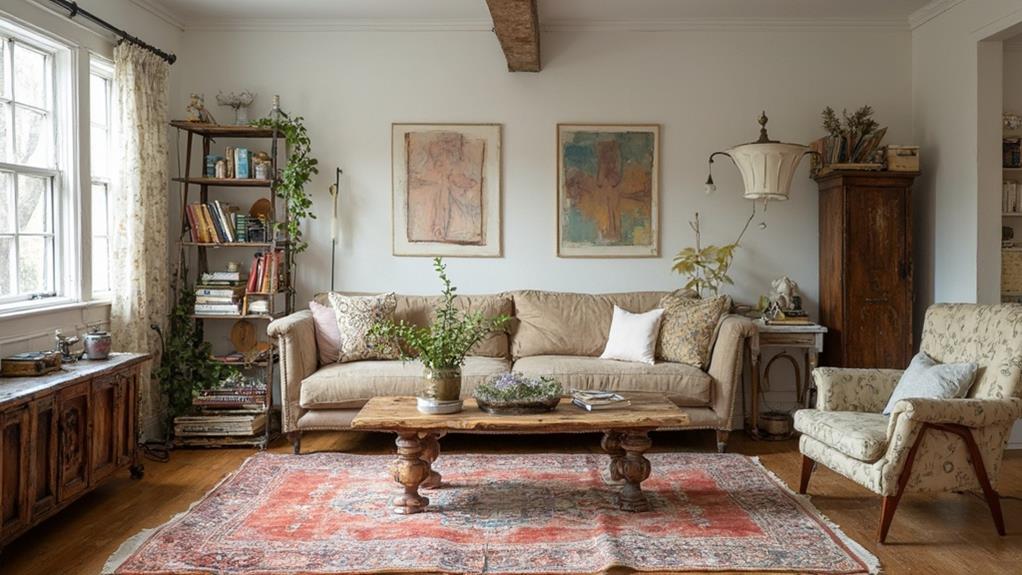
Venturing into the domain of thrift shopping can reveal a treasure trove of unique pieces for your interior redesign.
It's a budget-friendly approach that offers endless possibilities. You're not just saving money, you're also giving a second life to items that might otherwise end up in a landfill.
You might be surprised at the gems you can find in thrift shops, yard sales, or online resale platforms. From antique lamps to vintage rugs, these pieces can add a touch of personality and charm to your space.
No need to invest in expensive, brand-new items when you can achieve a stylish and eclectic look with pre-loved finds.
However, thrifting isn't just about buying. It's also about seeing the potential in items. Maybe that old mirror needs a new coat of paint, or perhaps that faded armchair can flourish with new upholstery.
It's about envisioning what an item can become with a little TLC.
Thrifting for your interior redesign is like going on a treasure hunt. It's thrilling, sustainable, and budget-friendly.
Don't be afraid to mix and match, and most importantly, have fun with it! Remember, your home is a reflection of your unique style and personality.
Repurposing Furniture for a New Look
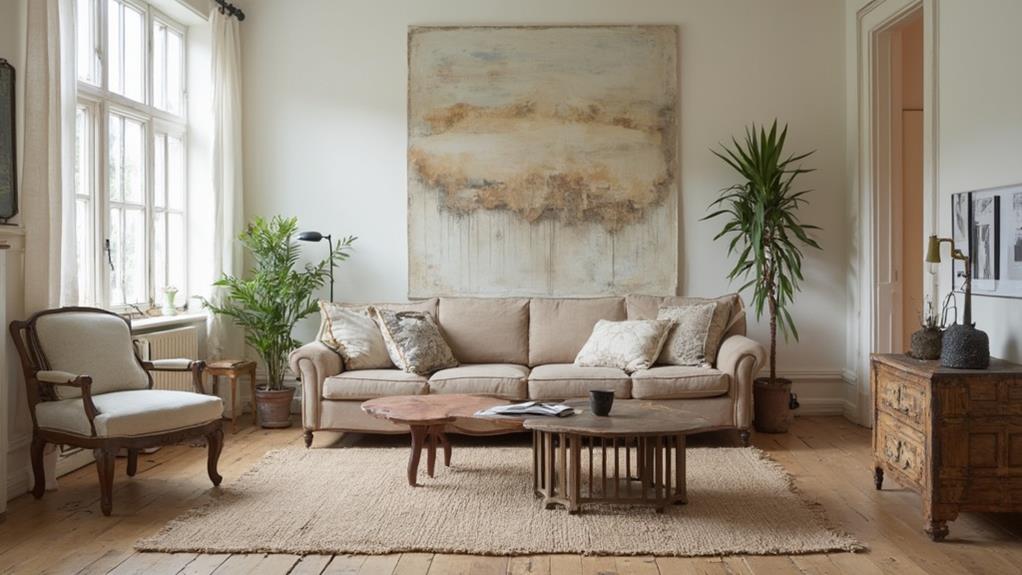
Breathing new life into old furniture isn't only a fantastic way to save money but also an excellent opportunity to create unique, personalized pieces for your home.
You might be surprised at how a bit of DIY magic can transform a tired piece into something fabulous, injecting a fresh dose of style into your space.
You don't need to be an expert craftsperson to repurpose furniture. You just need a few basic tools, some creativity, and a willingness to get your hands dirty.
Here are a few simple ideas to get you started:
- *Update with paint*: A fresh coat of paint can make a world of difference. Try bold colors for a statement piece, or go for muted tones for a more subtle effect.
- *Switch up the hardware*: Changing handles or knobs can give a piece a whole new look. There's a vast array of styles to choose from, from modern to vintage.
- *Transform function*: An old dresser can become a kitchen island, a ladder can become a bookshelf. Think outside the box!
Choosing Budget-Friendly Lighting Fixtures
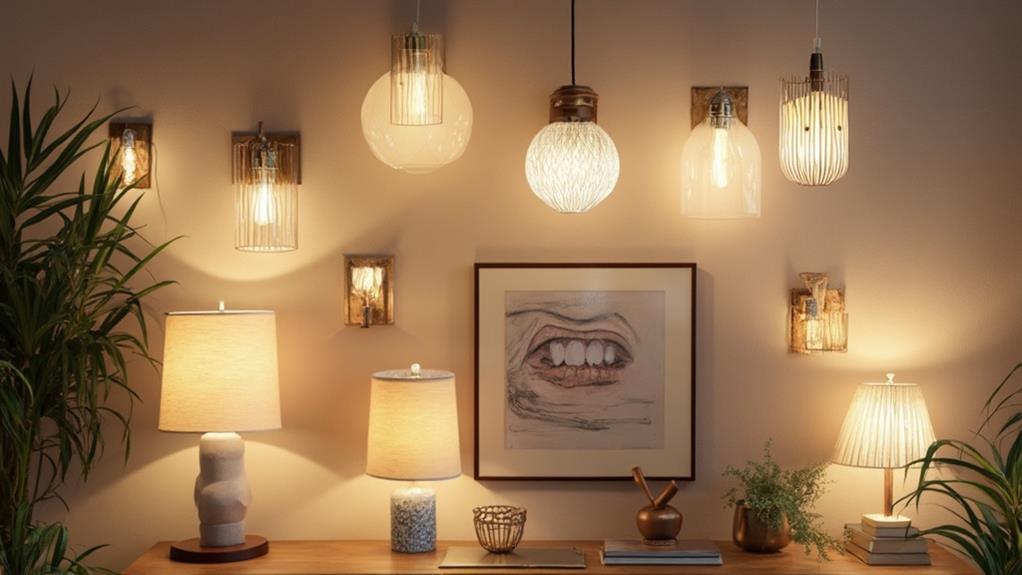
Lighting fixtures, without a doubt, play a pivotal role in setting the mood and functionality of your space. They're not just practical, they can also be key design elements.
But you don't need to drain your wallet to get the lighting you want.
Start by evaluating your space and identifying the type of lighting you need. General, task, or accent lighting – each has its own purpose and can dramatically affect your room's ambiance.
Next, do your research. Online platforms offer a wealth of affordable options. Don't shy away from second-hand markets; you'll often find unique, budget-friendly pieces there. Just make sure they're safe and functional.
Opt for energy-efficient bulbs. They might initially cost more, but they last longer and reduce your energy bills, saving you money in the long run.
Consider fixtures with adjustable brightness. They'll give you the flexibility to change the room's mood while also saving energy.
Finally, remember that less can be more. One well-placed, stylish fixture can do the job of several average ones.
Choosing budget-friendly lighting fixtures isn't about compromising on style or comfort. It's about making smart, informed choices that work for your space and your wallet.
Smart Space Utilization Techniques
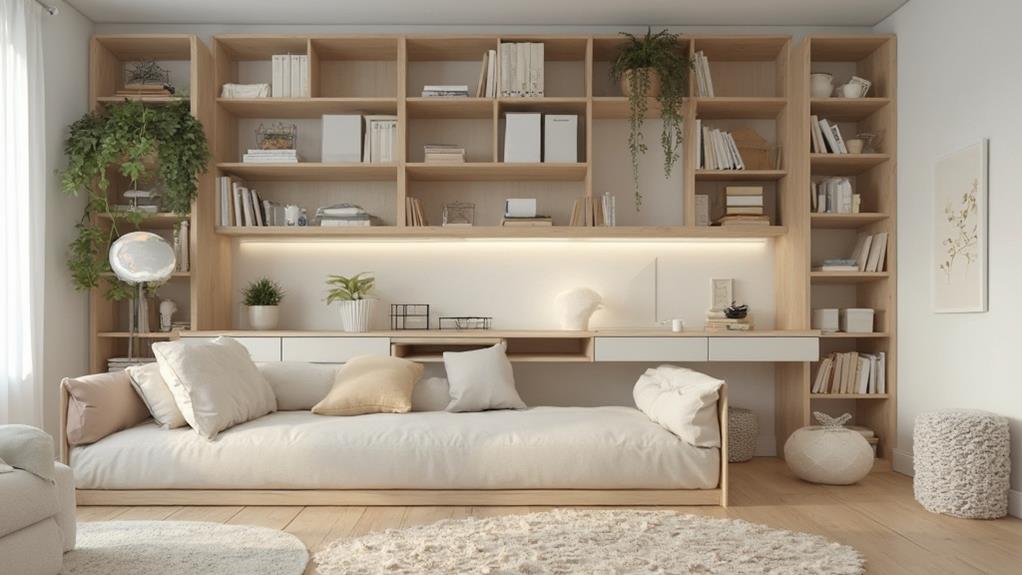
After outfitting your room with budget-friendly lighting, take a good look at your space. You'll realize that smart space utilization is key in achieving an appealing design without burning a hole in your pocket.
Firstly, consider your furniture layout. Do you have pieces that are too large, making the room feel cramped, or too small, causing the room to seem sparse? Rearranging your furniture can greatly change the feel of your space, and it won't cost you a dime!
Secondly, you should think about storage. Clutter can make a room look disorganized and smaller than it is. So, find creative ways to store or display your items. Consider using shelves, baskets, or under-the-bed storage.
Here are a few other ways to smartly utilize your space:
- Utilize vertical space: Install shelves high up on the walls to free up floor space.
- Double-duty furniture: Choose pieces that can serve more than one purpose, like an ottoman with storage inside.
- Use mirrors: Mirrors can give the illusion of a larger space, and they don't have to be expensive.
Personal Touches in DIY Interior Design
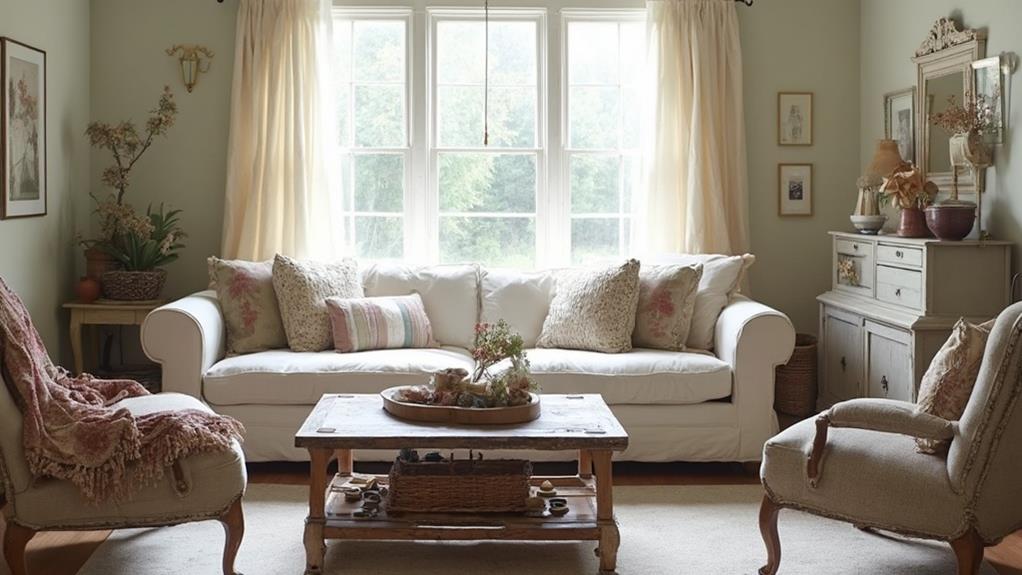
In the domain of DIY interior design, adding your own personal touches can transform your space from a generic room into a place that truly reflects who you are.
Imagine your home as a canvas, and you're the artist. You've got the power to create an environment that's uniquely yours, and it doesn't have to break the bank.
Start by showcasing your passions. Are you a book lover? Create a cozy reading nook filled with your favorite novels. Do you love to travel? Display souvenirs from your adventures. Your hobbies, interests, and experiences can all serve as sources of inspiration for your design.
Next, consider upcycling. This isn't just about being eco-friendly; it's also a terrific way to incorporate items with sentimental value into your decor.
Whether it's reupholstering a cherished armchair or repurposing an old ladder as a bookshelf, these projects can add a unique and personal touch.
Lastly, don't be afraid to experiment. There's no 'right' way to design your space. It's your home, so trust your instincts and let your personality shine through.
Developing a Cohesive Color Scheme
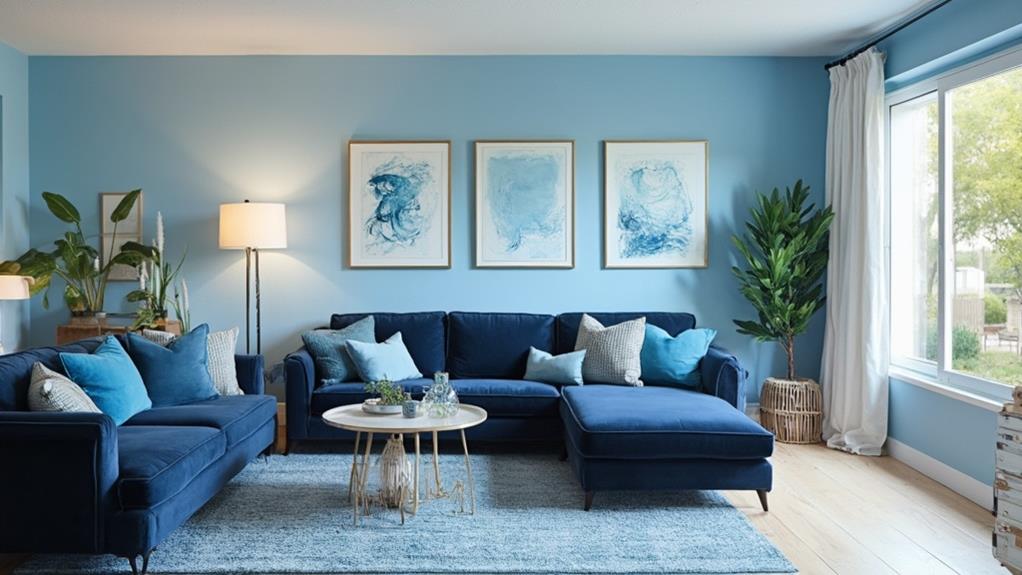
Moving forward, let's explore the art of developing a cohesive color scheme. A well-thought-out color scheme can pull your interior design together, creating harmony, balance, and a sense of unity throughout your space.
To start, you'll want to select a base color. This is typically a neutral shade that will cover the majority of your space, like your walls. Remember, it doesn't have to be boring. There are many shades of whites, grays, and beiges that can add depth and sophistication to your room.
Next, choose your accent colors. These should complement your base color and add interest and personality to your space. Don't be afraid to play with bold or bright colors here. Just keep it balanced!
- Don't forget about textures and patterns. They can add depth and interest to your design.
- Use color theory to inform your choices. Complementary colors create high contrast, while analogous colors provide a more harmonious look.
- Finally, consider the mood you want to create. Cool colors can create a calm and relaxing atmosphere, while warm colors can create a vibrant and energetic one.
There you have it! Creating a cohesive color scheme doesn't have to be complicated. It's all about balance, harmony, and personal preference.
Maximizing Your Home Makeover Budget
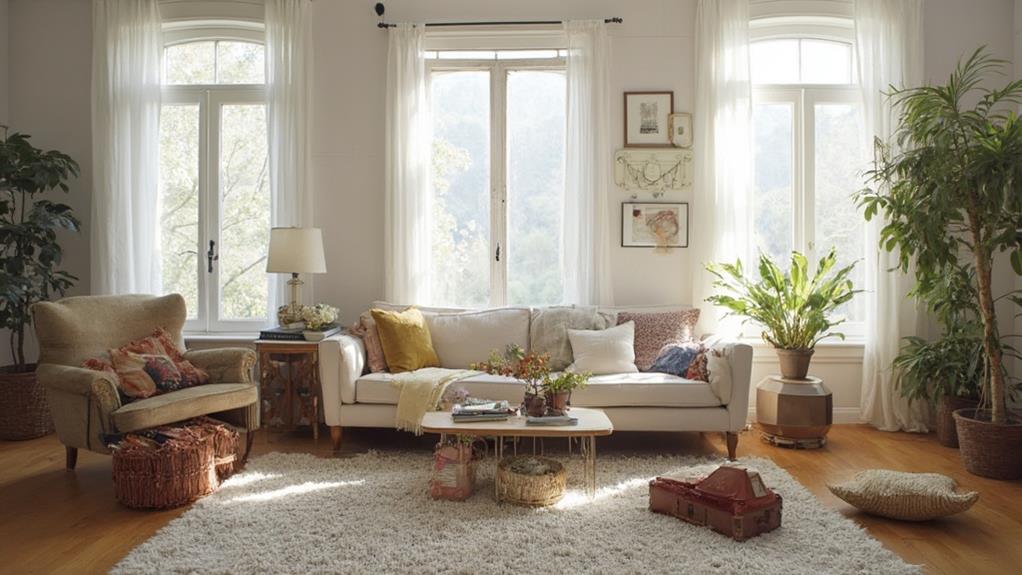
Stretching your home makeover budget to its fullest potential can create a space that's both beautiful and cost-effective. You don't have to break the bank to redesign your interior. Here's how you can make the most out of your budget.
First, prioritize your redesign plans. Which rooms need urgent attention? Focus on them first. It's pointless to throw money at minor aesthetic upgrades when there's a leaking roof or a faulty HVAC system.
Next, consider doing some work yourself. DIY projects can save a lot of money and add a personal touch to your space. Painting walls, installing shelves, or even sewing your own curtains can greatly cut costs.
Invest in quality over quantity. Instead of buying cheap furniture that won't last, save up for durable pieces. They may cost more upfront but will save you money in the long run.
Lastly, repurpose and recycle. Old furniture can be refurbished and given a new life. It's not only cheaper but also environmentally friendly.

